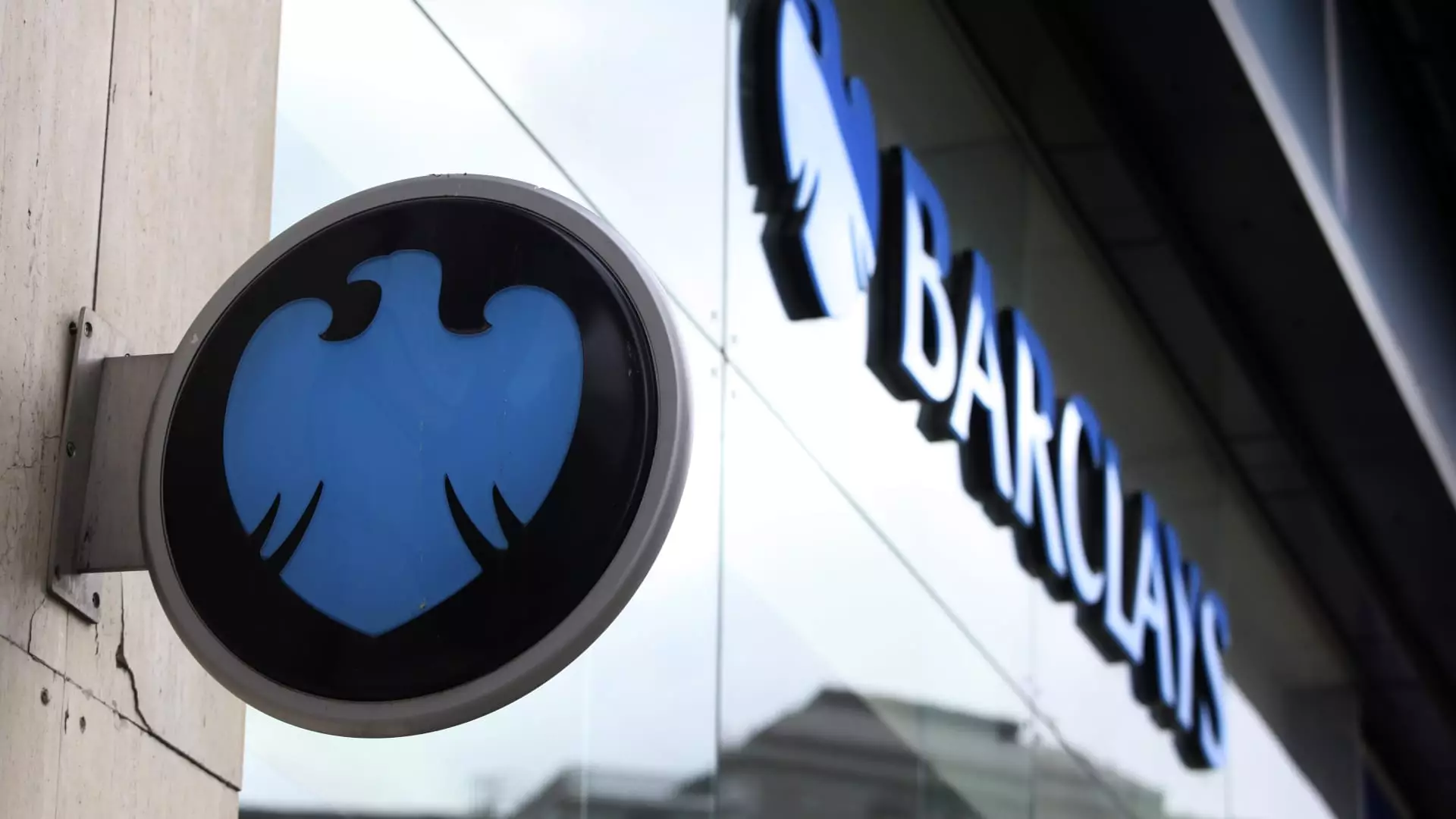In a climate marked by economic uncertainty, Barclays, one of the United Kingdom’s leading financial institutions, has reported a noteworthy increase in its annual pre-tax profit. The bank’s pre-tax profit surged by 24% to £8.108 billion for 2024, marginally exceeding analysts’ expectations of £8.081 billion, according to data from LSEG. This growth reflects not only the bank’s robust financial health but also its strategic maneuvers to adapt to shifting market conditions.
Shareholder returns are set to be bolstered further with the announcement of a £1 billion ($1.25 billion) share buyback program. Such initiatives serve as a tangible demonstration of the bank’s confidence in its financial stability and growth trajectory—a critical reassurance to investors in today’s volatile economic landscape.
While the overall annual profit figures are impressive, the fourth quarter presented a more nuanced picture. The attributable profit for this period stood at £965 million, falling short of the analyst projections of £994 million. This discrepancy raises questions about the bank’s ability to maintain momentum in all operating quarters, especially when juxtaposed against the rise in total income to £6.96 billion for the quarter, a considerable upgrade from £5.6 billion the previous year.
Moreover, the stark year-on-year gains of 28% and 46% in core investment and retail sectors further emphasize the disparities within the bank’s performance. These results illuminate the bank’s dual focus, where certain divisions excel while others face challenges that may stem from broader economic conditions.
As Barclays works to streamline its operations, the bank is pursuing a comprehensive strategic overhaul designed to cut costs by £2 billion by 2026. This initiative aims to enhance shareholder returns and stabilize financial performance, with a specific emphasis on consumer and lending segments. Notable strategic moves, such as the absorption of Tesco’s retail banking operation, are pivotal as the bank positions itself within a competitive marketplace.
Interestingly, Barclays stands to gain from the evolving competitive landscape, highlighted by HSBC’s decision to withdraw from its mergers and acquisitions and equity capital markets businesses in key regions, including the UK and the U.S. This exit could create new opportunities for Barclays to consolidate market share in an environment where traditional competitors are recalibrating their focus.
Compounding the institution’s challenges was a significant three-day technology outage that disrupted services for customers, leading to frustration and potential reputational damage. Thankfully, the issues have since been resolved, but they spotlight the reliance on technology in modern banking operations and the critical need for robust and reliable IT infrastructure.
Moreover, the wider UK economic environment remains sluggish, exacerbated by a general downturn in initial public offerings on the London Stock Exchange. The Bank of England recently initiated its first rate cut of the year, leading to predictions of further adjustments in 2025. While rate cuts can stimulate economic activity, they traditionally compress bank profit margins, creating a challenging paradox for lenders like Barclays.
The landscape for British and European banks is further complicated by competitive dynamics with U.S. counterparts, which may receive favorable regulatory environments under new political leadership. U.K. Finance Minister Rachel Reeves has been advocating for enhanced competitiveness alongside consumer protection, indicating a government focus that may alter the strategic landscape for banks operating in the UK.
As Barclays navigates these multifaceted challenges and opportunities, it remains imperative for the bank to balance growth potential with operational resilience. By fostering a proactive approach to market fluctuations and consumer expectations, Barclays can continue to enhance its competitive edge and financial performance in an increasingly complex global banking environment.
While Barclays has demonstrated impressive resilience through its earnings report and strategic initiatives, the road ahead will undoubtedly require further adaptation and vigilance as it responds to both domestic and international financial pressures.

